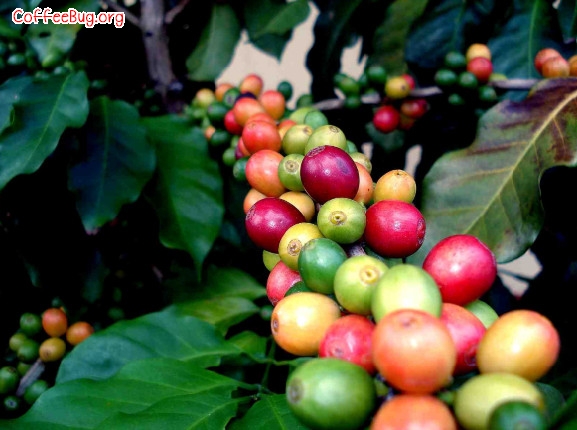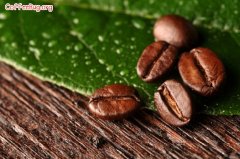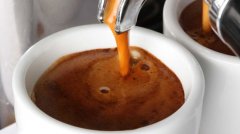A variety of coffee, Arabica, Karobsta, Lubebeca

Coffee beans can be divided into three types:
Arabica-Coffee contains about one percent caffeine by weight, and generally, the better quality, more expensive coffee beans come from Arabica beans. The coffee tree itself is very sensitive to heat and humidity, and the growth conditions are at least 900 meters above sea level. The higher the height, the better the quality of the roasted coffee beans. Caffeine content of this variety is low (1.1~ 1.7%). Coffee beans are green to pale green in color, oval in shape, and curved in grooves.
Robusta-Coffee contains about 2 percent caffeine by weight. It accounts for 20 - 30% of world production. It has strong resistance to tropical climate and is easy to cultivate. It grows especially well at sea level of 200 - 300 meters. However, its unique resistance also makes its concentration higher and its taste more bitter. Caffeine content is high ( 2~4%). Coffee beans are round in shape, brown in color and straight in grooves.
Liberica-only consumed by Europeans except in a few producing countries, with poor aroma, strong bitterness, and a sharp diamond shape at the top of the coffee bean
Types of coffee
varieties
Arabica
Robusta (lowland cultivation)
Liberica (lowest cultivated)
yields
About 70%~80% of the world's total production
About 20%~30% of the world's total production
Only Europeans drink it, except for a few producing countries that consume it themselves.
cultivation site
500m~1000m inclined ground
inclined ground below 500m high
Lowland or flat below 200m
Gas temperature conditions
Not adapted to high temperature and low temperature
high temperature resistant
High temperature and low temperature resistance
Rainfall conditions
Not adapted to more rain, less rain
Rain tolerance, less rain
Rain tolerance, less rain
tree height
5 m~7m
5m
10m
bean-shaped
elliptic flat
short oval
The tip is pointed and rhombic
petal
5-merous
6-merous
8 petals
fruit
The exocarp is harder, the endocarp is more fruity, and it is easier to peel off after maturity.
The pericarp is thin between exocarp and endocarp, and more than ten stripes like meridians can be seen on the surface of pericarp. It is not easy to peel off after maturity. The pericarp is thin, so it is easy to separate from seeds.
The fruit is twice as large as Arabica. The pericarp, endocarp and integument are very thick, especially the seeds adhere tightly to the seeds. The operation of removing the integument takes more time and is not easy to peel off after maturity.
leaf blade
The leaves are about 15cm long and elliptical, with sharp tips and dark green glossy surfaces.
The leaf length is about 10cm~20cm, which is slightly softer than Arabica, and the mesophyll is thinner than Liberica. The surface of the leaf surface is bulged, and the whole leaf surface can be seen undulating like waves.
taste channel
Good smell.
Lack of aroma, bitter taste, lack of sourness
Poor aroma, bitter taste
characteristics of
Shading trees should be planted in low latitude areas with poor disease tolerance and temperature of 15~20 ℃.
Adaptability is strong, the harvest is the most among the three original species.
It has strong disease tolerance and adaptability, and is often used as a rootstock for Arabica.
planting density
The maximum is about 1.5 times that of Robusta and about 2 times that of Liberica.
moderate
lowest
Main producing countries
Brazil, Colombia, other Central and South American countries, Ethiopia, Angola, Mozambique, Tanzania, Yemen, Kenya, Hawaii, Philippines, India, Indonesia, Papua New Guinea... Wait.
Tropical African countries, Hawaii, India, Indonesia, Trinidad, Tobago, Philippines... Wait.
Libya, Suriname, Guyana, India, Indonesia, Angola, Cote d'Ivoire, Philippines.
Important Notice :
前街咖啡 FrontStreet Coffee has moved to new addredd:
FrontStreet Coffee Address: 315,Donghua East Road,GuangZhou
Tel:020 38364473
- Prev

The preservation of coffee beans affects the three factors of coffee beans.
It's not cool to have a cup of delicious coffee. But you must know how to select and save coffee. Improper preservation methods will affect the taste and flavor of coffee. (1) three major factors affecting coffee beans: degree / degree / daylight (2) the best tasting period of coffee: coffee beans are four cups and coffee powder is one gram. (3) the shelf life of coffee beans in vacuum packaging: vacuum can about 2.
- Next

How to preserve freshly roasted coffee beans? How to preserve the flavor of coffee beans?
After roasting, the internal chemical changes of coffee beans will continue. After roasting, there is only aroma at first, and the taste will be sour. After 4 or 12 hours, the sour taste will be gradually removed, and at this time the taste will become full, and it should be said that it is suitable for the entrance. However, within 3 to 7 days is the peak of the best flavor, the taste is mellow and rich, when the golden period of seven days, the bitterness will be more
Related
- Guji coffee producing area of Guji, Ethiopia: Humbela, Shakiso, Wulaga
- What is the most expensive variety of Qiloso in BOP multi-variety group?
- How to store the coffee beans bought home?
- Why are Yemeni coffee beans so rare now?
- Ethiopian Sidamo all Red Fruit Sun Sun Santa Vini Coffee beans
- SOE is mostly sour? What does it mean? Is it a single bean? what's the difference between it and Italian blending?
- Is Italian coffee beans suitable for making hand-brewed coffee?
- How to choose coffee beans when making cold coffee? What kind of coffee beans are suitable for making cold coffee?
- Just entered the pit to make coffee, what kind of coffee beans should be chosen?
- Can only Japan buy real Blue Mountain Coffee? What are authentic Jamaican Blue Mountain coffee beans?

